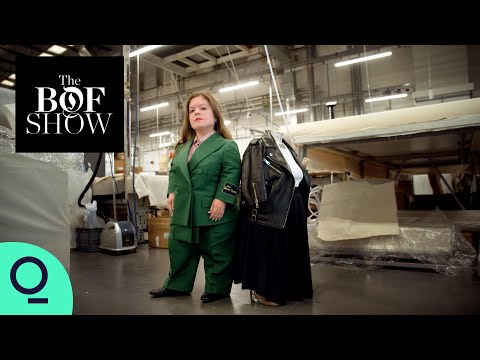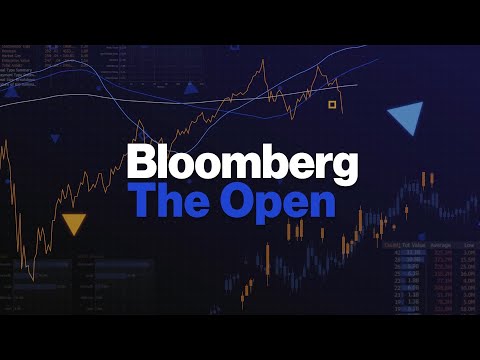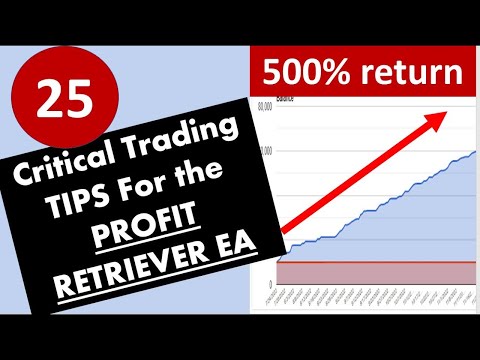The Business Case for Diversity in Fashion

How can an influential and exclusive business become more inclusive? Educator and disability advocate Sinéad Burke is on a mission to change the way fashion is represented in our world. When this process first began, which was almost two years ago, it was for a need and an urgency for the National Museums of Scotland because they were doing this exhibition on the diversity of fashion. Sinéad has achondroplasia, a form of dwarfism, and identifies as a little person. I asked how they were going to exhibit my clothes.
They said that they were gonna hang them from the ceiling. I asked how everything else was going to be displayed and they said, well, mannequins. So really, almost flippantly, I said, "Okay, well how do we get a mannequin made?" How cool is that? It's amazing.
I met with experts, executives, and advocates in London and Paris who want to see the gilded doors of the fashion business thrown open. I certainly experienced tremendous racism. I didn't fit the very narrow profile of what was acceptable.
Together, we're going to explore not just the moral argument, but the business case for letting everyone in. What we wear says a lot about who we are, yet fashion is also a $2.5 trillion global industry that touches everyone on Earth. I'm Imran Amed.
I first started trying to make sense of the fashion business 15 years ago as it was being transformed by technology, globalization, and shifting consumer values. Now I'm on a journey to see how fashion is recalibrating amid the pandemic to balance profit with purpose. This is "The Business of Fashion" show. Join me to discover how fashion shapes business, culture, and identity, and to meet the people forging fashion's future. The luxury business is built on exclusivity. Fashion can appear inclusive in terms of ethnicity, body shape, and age.
And designers may have shone a broader light on beauty, but a caution about always taking fashion at face value. Analysis of thousands of images posted by leading luxury brands on Instagram revealed that light skinned models continue to dominate fashion imagery. And when it comes to decision makers at the top, in the design studio or the boardroom, the seats of power remain largely unchanged. It's good to witness visible and vocal advocates, from trans icons to gender nonconforming people. Fashion is doing more to count everyone in, yet the business case for creating more diversity inside fashion companies is even more powerful, leading to higher levels of profitability. Businesses with the most ethnic and gender diversity outperform the least diverse by as much as 36% and they are much more likely to tilt the lens to spot new business opportunities such as a largely untapped 15% of the world's population who have disabilities and a spending power topping $1.2 trillion.
No wonder fashion is paying attention. The wider positive trend, boardroom diversity widens the perspective at the top. Entry-level pathways are no longer reserved only for those who can afford to take them because the bottom line, to the benefit of shareholders in society at large is that belonging is good business. Since this is an episode about belonging, it's important to say a few things about my own identity upfront. I am am Ismaili-Muslim man of Indian origin, born in Canada to immigrants from East Africa. I was an outsider when I started sneaking into fashion shows in 2005.
Back then, the front rows were a uniform, narrow representation of the world. Now, I am invited into elite fashion spaces where the front rows are changing. One stalwart is Edward Enninful, the first Black man to be appointed as the Editor in Chief of Conde Nast British Vogue. At the Paris couture shows, I was also reunited with Samira Nasr who became Editor in Chief of Harper's Bazaar, owned by fashion's other media giant, Hearst. After a long day of shows, we met to talk about everything that has happened since the beginning of the pandemic, including her rise to the very top of fashion media.
Her premiere issue was poignant, examining the paradox of being first. Your appointment in this role was not just a big change for you, it represented pretty significant shift for Harper's Bazaar, for fashion media, the first woman of color ever in the history of Harper's Bazaar at the helm. What did it mean to you personally, but what do you think it also signified for all those young women from different backgrounds who never saw someone like you in a role like this? I think that in that moment, everyone felt seen.
I think it was so much about me and people rooting for me, but I think ultimately, people were also rooting for their likeness. It's an acknowledgement of all people who have felt not seen and it just means that more people can dream and aspire to something that they never thought they could, and that's a beautiful thing. What does real inclusion look like in fashion? Walk down the street. To me, that's exactly what it should mean. You shouldn't be excluded because where you come from, or what you look like, or your sexual orientation, or how you identify yourself, it should just be are you willing to do the work and do you have the passion to try.
That's what every industry should look like. Back in the days when you first started, what was it like? It was hard and I certainly experienced tremendous racism. Within the industry? Oh my gosh, yeah.
I've had some horrible things said to me. Having to go meet an editor, a big, powerful editor and everyone's like okay, you have to go meet this editor and let's make sure you look okay and then someone says, so and so editor doesn't like messy hair and so all the people who are around me who are trying to help me get ready are like, oh my God. And I'm looking. Who has messy hair? Who has messy hair? And I realize 'cause my hair, when it's out, it's very big, and I realized they're talking about me and that's just one example of my natural texture hair was messy. I didn't fit the very narrow profile of what was acceptable. So now that you're in the role that you're in, you must feel a great sense of responsibility.
This role isn't about me, it's about we. It's about the community that I can bring together and share these platforms and elevate these voices and bring them along with me, so it's about the we. But I believe we all have a responsibility. It's like you get through the door and every one of us has a responsibility to look back from where you came and extend your hand and pull someone in with you, but this industry isn't entirely filled with horrible people. I feel like we have to change that narrative also 'cause I love this industry.
Why do you love this industry? It's everything. It reflects our times, it is a community, it's creative, it is a social commentary, it's kind of a social experiment, really. So many misfits who find their way in and find their voice and their place and we get to dream, you know? We saw two incredible shows today and those people are part of my community. And we get to do that. And we get to do that.
Cheers. Cheers. We'll always have couture. We will.
Samira's idea of using her influence to open doors for others sticks with me as I head back to London. Every year, "The Business of Fashion" hosts a live event called "Voices", our annual gathering for big thinkers. In 2017, disability advocate Sinead Burke addressed an audience of fashion leaders and explained how the industry systematically excludes disabled people. I have had an insatiable interest in the fashion industry for as long as I can remember despite having such limited access to it. As founder as CEO of "Tilting the Lens", a consultancy that brings visibility to inaccessibility, Sinéad advises companies like Gucci and Ralph Lauren on moving from awareness to action. When I meet with Sinéad in London, we start by reflecting on her journey from "Voices" and how her goals have changed along the way.
When you meet someone now, how do you describe who you are and what you do? It's funny. I think if we were having this conversation five years ago, I probably would've described myself, first, because of my visual identity in the sense that I have dwarfism, that I'm a little person, I'm a disabled woman. Whilst I still use that language, I'd probably talk about my interests and my work more now, not because those aren't defined by my disability, because they are. I understood that when people looked at me, they had assumptions over what I could and couldn't do based on my aesthetic.
And I knew within my own instincts that fashion had this power to tell a new story, one that I had agency over, because I'm giving you permission to enter into my world, to learn who I am, and yet despite knowing the power of fashion to do that, I never felt represented or seen or able to buy the clothes that I felt comfortable in. The vulnerability that we've shared with each other in private moments has really emboldened me on my own purpose in this industry. And I was someone who kind of put my own identity in the background.
Some of the challenge around visible identities is that as much as we try to pocket them, the world stills sees us as that. I may not describe myself as disabled, but the world sees me as disabled, the fashion system sees me as disabled and me not having pride around that gives them permission to own whatever narrative they think disability exists with them. I imagine that's the same with being Muslim, being gay, being an immigrant. Tell me what happened after "Voices". Afterwards? I felt vulnerable because I had exposed myself, personally, but also professionally. I had just told the industry I knew what they needed to do.
Did I? I had no idea. I haven't since then. And what happened afterwards was more and more conversations, initially with individuals, then with friends and companies.
It was appearing on stages with microphone in my hand, going to fashion shows. It was incredible. Five years ago, if you were to ask me what success was, I would've said the availability of clothes. My vision has widened.
I really do think the availability of product is important because I think it's more important that we are hiring disabled people within these companies. That's what I wanna change. Voices like Sinéad's matter, but how do we measure progress? One challenge is the lack of robust data.
In the key European fashion economies of France, Italy, and Germany, companies cannot collect personal data on identity due to national privacy laws. The U.K. goes the furthest, asking its citizens each Census to volunteer their racial, physical, sexual, and gender identities.
So to continue our discussion, Sinéad and I meet with two leaders in British fashion to share their own experiences. June Sarpong is a broadcaster, activist, author, and the first director of creative diversity at the BBC. Jamie Gill is CEO of luxury fashion brand Roksanda. Both are non-executive directors of the British Fashion Council, appointed in the wake of the "Black Lives Matter" protests.
June and Jamie, I just wanted to start very quickly maybe with you first, June. How do you identify and what is your personal story? My Britishness in a way is a sort of the link for me to the world, you know? It's a wonderful identity to be able to take with you globally. Everybody sort of connects with Britishness. I would say my Ghanaian in culture for sure is my foundation. That's my roots.
And then my race is something that I am so immersed in and with and also impacts my experience in so many ways. Jamie, how 'bout you? How do you identify? Identify. I would identify myself as a British-Indian gay man, I think. And I'd add on Londoner I think to that as well. Yes!
I forgot that. That was one thing, I was thinking about it, I was like, yeah, we say British, but I think there's, you know, as we all know, there's a culture of being from London that I very much champion and I think growing up my whole life and coming from a working class background as well and growing up in the Midlands and being a minority on so many regards, I saw those as just such hindrances. Such hindrances that I carried with me, that weighed me down, that didn't allow me to be free. So we're here talking about belonging in the fashion industry and you both, all of us, actually, were outsiders. Oh yeah! All of us. None of us came up through a traditional path.
No. But we've all found our way somehow into this industry. Some people outside might think we don't have a diversity problem, for that regard, but operationally, the people from any different kind of background I think is very, very minimal and I think working in a kind of smaller business, but if we were to look bigger and we would look at listed companies out there even within the kind of fashion space is what acts sees sweet.
It is nonexistent. But are we at a point now where we need measurables, KPIs? Like what does success look like when it's delivered? I don't think we have an example of success yet, and that's the issue. So we're asking people to imagine something that perhaps in any industry, actually, has never really existed, at least not at scale. The first thing to do is to connect with the most disenfranchised group within your organization and ask them what their experience is of your organization. That's gonna tell you everything about your culture. Well, it raises a really interesting question about our industry as a whole, though, is like this industry was designed around exclusivity.
It is. So is there a way of reconciling that exclusivity in terms of prize, or scarcity, or access, or being in the room with inclusion and belonging and equity? Yes! And that what it should've been designed around is aspiration, in that it's about all of us wanting to be the best version of ourselves. If you look at accessories, accessories are about aspiration, accessories are the entry point for people who can't afford the actual clothes et cetera, et cetera.
They knew they had to do that because of the financial benefits. Why can't we apply that same thinking for everything that we're talking about here? Amongst this monoculture that fashion still is, especially on the business side, how do we also do it in a way that people aren't so scared? When we talk about the changes that are needed, we need to be really frank that for those who have been used to privilege, equity feels like oppression. Like oppression, yes. Cindy Gallop. She's right! Because in order for others to take up space, some have to retract.
So that pattern of behavior that they've been practicing in terms of what leadership is... Won't work anymore. No longer exists. So it's not that we need to replace every CEO with somebody who looks different. It's not functional, nor it is practical, nor is it the way we need to move forward. We've got to do something visually, very externally projecting that we are welcoming and there are roles available, at least from the operational side, like what is it like to be an operations director of a fashion business and why does that skillset actually maybe lean in to what you think you want to be doing? So I think we do need to be working on that as a collective.
If we go back to the ways in which we have always done things, what does it take? People to die? If we look at George Floyd, if we look at the pandemic, it requires us to lose people in order to change. The great thing is is that between the four of us, we can probably change a sizable portion of the world. With that on our minds, Sinéad and I head over to Proportion London, one of the UK's largest manufacturers of mannequins for the retail industry. Today, Sinéad is having the final casting to complete a mannequin of her body, which can be used as a model for other little people to be better represented in fashion. Hello! Gaetano, this is Imran. Imran, this is Gaetano.
Hi. Nice to meet you. How are you? I am all right. Thank you for having us. It's such a treat.
You wanna put this one on. This is gonna be the most glamorous fit of the entire fashion show. Like couture has nothing on us, Gaetano. Sinéad, this is the second time you're doing this, right? Yeah. So do you wanna tell us a little bit about how this mannequin situation happened? So the National Museums of Scotland were putting together this exhibition called "Body Beautiful".
They were the first ever cultural institution to do an exhibition with diversity in fashion and when it came to disability, they asked if they could borrow some of my clothes. And one of those items was the trench coat, which I had actually saved from the "Voices of Fashion" shoot and I said, how are you gonna display my clothes? And the initial suggestion was that they would hang them from the ceiling. A lovely idea, but I asked how was everything else being displayed? And they just said mannequins. I said, okay, great. How do we get a mannequin made for my clothes? I can't tickle her right now, right? No.
So after this mannequin is done, what's gonna happen? My hope is that first, we kind of tackle the education system and that we're able to collaborate with Central Saint Martins, Parsons, FIT, the National College of Art and Design in Ireland, to make these available for students because if we have mannequins, all of a sudden, fit becomes a different conversation, and from then, it would be great to see this mannequin in retail spaces visually, but we need product first. And you don't have anything to put on the mannequin yet. No. So putting clothes that may fit is one thing, but it needs to be in the tailors, it needs to be in design studios, and we need to be looking at this as a way in which to get it into CAD also and thinking about the measurements. Amazing. You see that and went mhm. Yeah.
Just a little bit longer than this. Yeah. Yeah. My mannequin is a composite of me. My lumps, my bumps, my curves, me. And when I first saw the mannequin in person, I was really insecure about it because it didn't look like any of the mannequins that I had seen and I was almost joking about the size and the measurements and I was uncomfortable with it, but I'm not uncomfortable with me. It's the world making me feel like I don't conform to everything else, and actually, it's that discomfort that proves the importance of this.
As soon as you told me that this was happening, I wanted to be apart of it and just witness it because it felt pretty monumental. It wasn't until I saw all of these mannequins around me that I realized that in a place like this where these body shapes and these body types are then replicated over, and over, and over again and show up in retail stores and in design studios and in schools that that's why we all develop these ideas of what body shape should be. And it wasn't until seeing you in this space that that was reinforced for me. Marginalized communities are not looking for special treatment from fashion, they're looking for equal treatment. There are certainly powerful, moral, and business arguments for doing so, but the question remains, how prepared is the fashion industry to take real action?
2021-10-29 16:15


